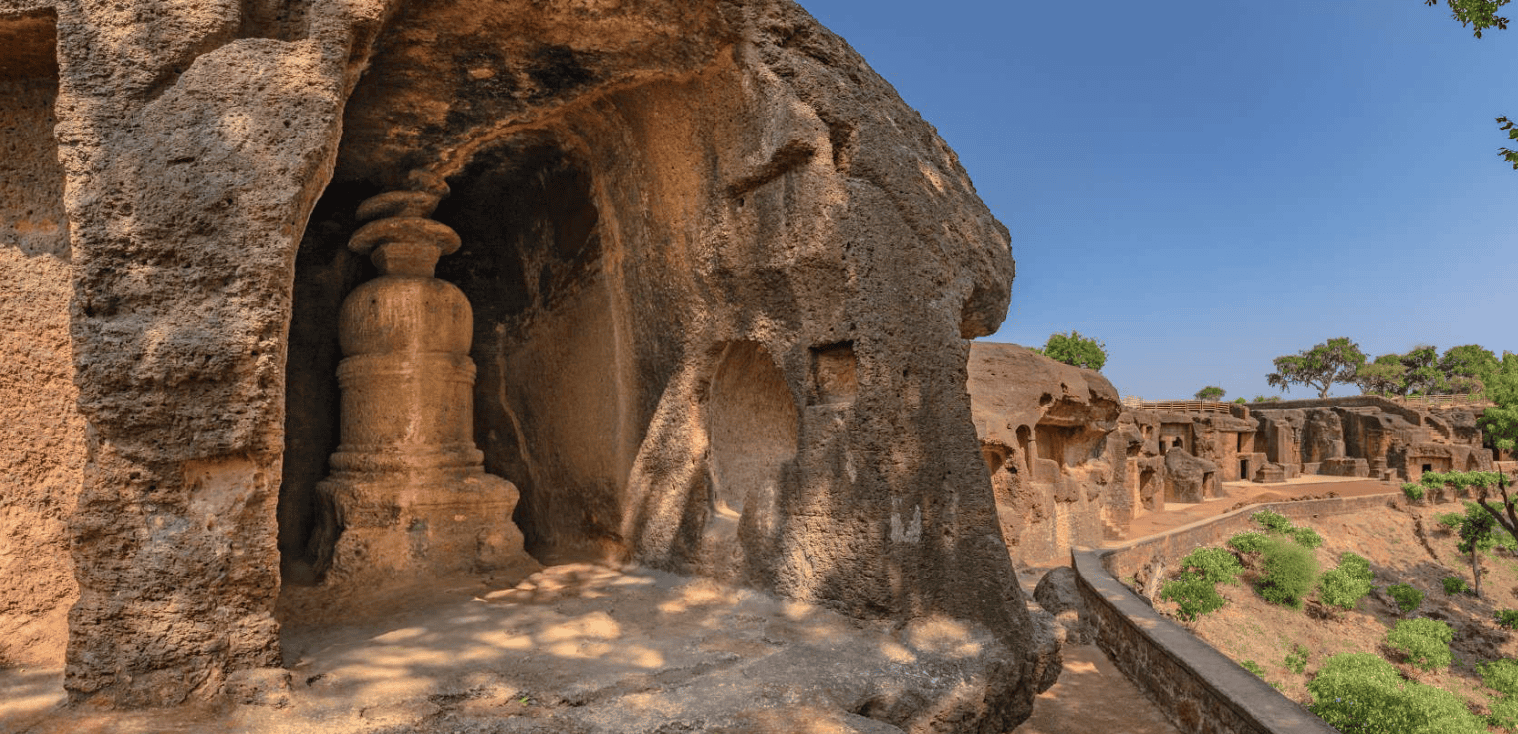An Ancient Buddhist Splendor on UNESCO’s Radar, Dhamnar Caves have stood the test of time for over a millenium

Tucked away in the tranquil village of Dhamnar in Madhya Pradesh’s Mandsaur district, the Dhamnar Caves stand as a breathtaking testament to India’s ancient spiritual and artistic legacy. Carved meticulously into a laterite hill between the 5th and 7th centuries CE during the Gupta era, this complex of 51 monolithic caves is a striking example of rock-cut Buddhist architecture.
Now proudly featured on the Tentative List of UNESCO World Heritage Sites (2024), Dhamnar is home to 14 large and 37 smaller caves.
These sanctuaries were sculpted directly into the coarse laterite rock, not constructed, making their intricate detailing even more remarkable.
The caves house exquisitely carved stupas, chaityas (prayer halls), viharas (monasteries), and sculptures — each reflecting centuries of devotion, meditation, and artistic brilliance. Their south-facing design once offered refuge to monks during rain retreats, embodying the spirit of monastic life.
Among the notable structures is Bhim Bazar, with its verandah lined by small chambers and a serene statue of Lord Buddha in meditation. Badi Kachahari, or the “Great Courtroom,” impresses with its grand hall upheld by two massive pillars, six finely carved arches, and a central stupa. Cave No. 13 (Chota Bazar) features 15 well-preserved sculptures around a stupa on a square base, while the Bhima Temple enriches the sacred atmosphere with Buddha depicted in a teaching posture. The Pradakshina Path (circumambulatory path) invites visitors to engage in a timeless tradition of Buddhist worship.
Dhamnar’s cultural significance extends further with the nearby Dharmrajeshwar Temple Complex, a rock-cut Brahmanical sanctuary that complements the region’s rich architectural diversity. Together, these sites narrate the story of a land where faiths and artistic traditions flourished side by side.
Rediscovered in the 19th century, Dhamnar caught the attention of early explorers and historians, including James Tod (1821), James Fergusson (1845), and Alexander Cunningham (1864–65), who were captivated by its silent grandeur.
Madhya Pradesh, the Heart of Incredible India, invites travelers to explore these hidden treasures — where magnificent architecture, pristine natural beauty, and vibrant traditions come together to offer journeys of discovery and renewal.
— Shri Sheo Shekhar Shukla, Principal Secretary, Tourism, Culture, and Religious Trusts & Endowments Department, and Managing Director, Madhya Pradesh Tourism Board
Every carving, courtyard, and chamber of Dhamnar Caves beckons history lovers, spiritual seekers, and explorers to experience the sublime artistry and serenity of ancient India. This offbeat gem of Madhya Pradesh promises an enriching experience unlike any other.
Travel Tips
Best Time to Visit: August to April
Nearest Railway Station: Mandsaur Railway Station
Nearest Airport: Devi Ahilya Bai Holkar Airport, Indore
Read more – Latest



